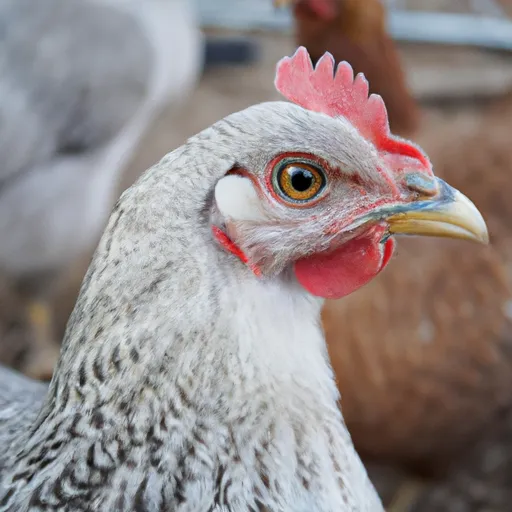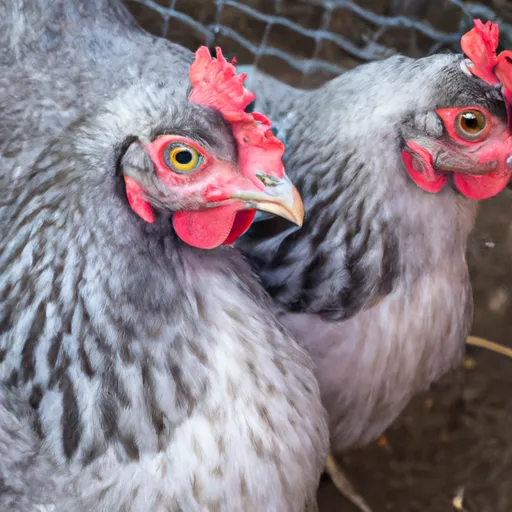All About the Lavender Orpington Breed
In "All About the Lavender Orpington Breed," the author shares their personal experience with adding the Lavender Orpington chickens to their backyard flock.
They describe the breed as beautiful, gentle, and easy to manage. The article also provides a brief history of the Orpington breed and explains how the Lavender color variation was developed.
The author highly recommends adding the Lavender Orpington to any flock and suggests a reputable source for purchasing these chickens. Overall, it's an informative and enthusiastic account of the qualities and benefits of the Lavender Orpington breed.

Lavender Orpington Breed
If you're looking for a beautiful and friendly addition to your backyard flock
, look no further than the Lavender Orpington breed.
These chickens are not only visually stunning with their light and fluffy plumage, but they also have a calm and friendly temperament that makes them a joy to have around. In this article, we will explore the Lavender Orpington breed in detail, including their characteristics, history, and where to buy them.
Lavender Orpington Breakdown
Let's start by breaking down the key characteristics of the Lavender Orpington breed. This will give you a good overall snapshot of what to expect when raising these chickens.
Type: Orpingtons are a standard breed, known for their large size and fluffy feathers. Although the Lavender color is not recognized, it is a popular variation.
Class: The Lavender Orpington belongs to the English class of chickens.
Temperament: These chickens have a calm and friendly temperament, making them easy to handle and great for families.
Kid-friendly: Yes, Lavender Orpingtons are known to be kid-friendly. Their gentle nature makes them a great choice for families with children.
Broody: Orpingtons, including the Lavender variety, are known to be broody. This means they may exhibit motherly instincts and desire to hatch eggs.
Heat Hardiness: Lavender Orpingtons need plenty of shade and water during the summer months to endure high temperatures.
Cold Hardiness: These chickens are also cold-hardy, meaning they can withstand colder temperatures without issue.
Space Per Bird: Each Lavender Orpington needs between 4-10 square feet of space to live comfortably.
Beginner Friendly: Yes, this breed is beginner-friendly. Their easygoing nature and low maintenance make them suitable for new chicken owners.
Eggs Per Year: Lavender Orpingtons are good egg layers, producing between 170-200 eggs per year.
Egg Size: The eggs laid by Lavender Orpingtons are medium-sized.
Egg Color: The eggs of this breed have a light brown color.
Dual Purpose: Lavender Orpingtons are considered a dual-purpose breed, meaning they are both good for egg-laying and meat production.
Mature Weight: Males weigh around 10 lbs (160 oz), while females weigh around 8 lbs (128 oz).
Comb Type: Lavender Orpingtons have a single, five-point comb.
Heritage Breed: No, the Lavender Orpington is not considered a heritage breed.
Processing Age Ready: These chickens are ready for processing between 16-20 weeks of age.
Lifespan: Lavender Orpingtons have a lifespan of 8-10 years.
Cost of Chicken: The price of a Lavender Orpington chick can range from $4-$8, depending on sex and where you purchase them.
My Experience With Orpingtons in My Flok
I have had the pleasure of keeping three Lavender Orpingtons in my flock, and I must say they have been a delightful addition.
These chickens have a gentle nature and get along well with their flock mates. They are not at the top or bottom of the pecking order, preferring to stick together with others in their little group within the flock.
As for egg-laying, they have been consistent producers of medium-sized, light brown eggs, averaging between 170-200 eggs per year. While Orpingtons, in general, are known to be broody, I haven't had any issues with broodiness with my Lavender Orpingtons yet.
Their big and poofy feathers make them appear heavier than they actually are, but they are not overly vocal or noisy. Overall, my experience with Orpingtons in my flock has been wonderful.
History of the Orpington
The Orpington breed originated in England in the 1800s and was bred by a man named William Cook. Cook named the breed after the small town of Orpington in England.
He aimed to create a dual-purpose chicken breed that would excel both in egg-laying and meat production. Cook's Orpingtons gained popularity, especially in the United States, where they were highly sought after at poultry shows.

However, with the rise of large-scale poultry farms in the mid-20th century, the breed's popularity declined, and it was eventually placed on the "threatened" breed list. Fortunately, in recent years, the Orpington breed has made a comeback as a family and show breed.
The Lavender variety was introduced in the late 1990s and has since gained popularity for its unique coloration. Lavender Orpington chickens breed true, meaning two Lavender parents will produce all Lavender offspring.
Where to Buy the Lavender Orpington
If you're convinced that the Lavender Orpington is the right chicken for you, you may be wondering where to buy them. I highly recommend Hoover's Hatchery as a reliable source.
I have personally had great success using Hoover's and receiving chicks through the mail. While it may seem a bit daunting to have live chicks shipped to you, rest assured that the process is straightforward, and the chicks arrive safe and sound.
Just remember that they may be a little dehydrated and fragile upon arrival, so it's essential to have a Baby Chick Care Kit on hand to ensure they get rehydrated and off to a strong start. Happy chick season!
In conclusion, the Lavender Orpington breed is a wonderful addition to any backyard flock. Their beauty, friendly temperament, and dual-purpose qualities make them a popular choice among chicken keepers.
Whether you're a beginner or an experienced chicken owner, the Lavender Orpington is sure to bring joy and charm to your flock. So why wait? Start adding these lovely chickens to your coop and enjoy the many benefits they have to offer.
